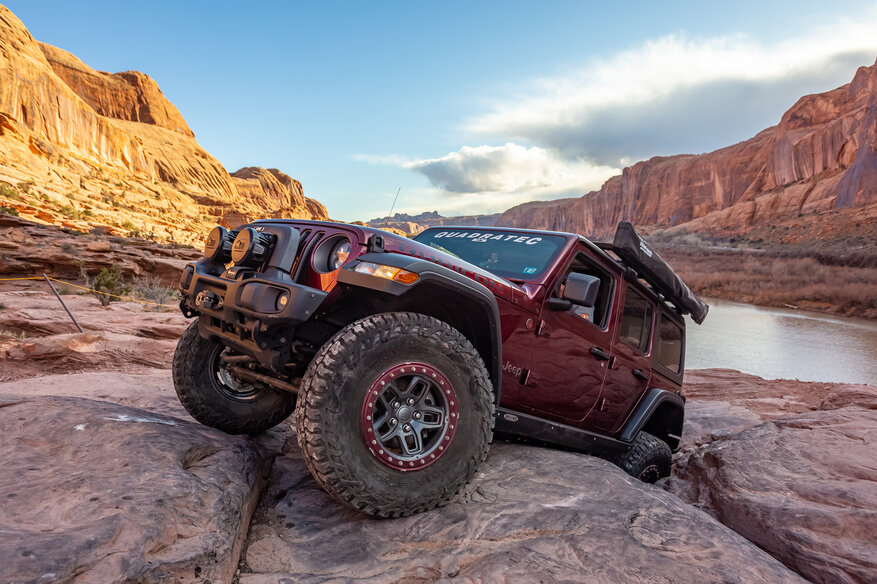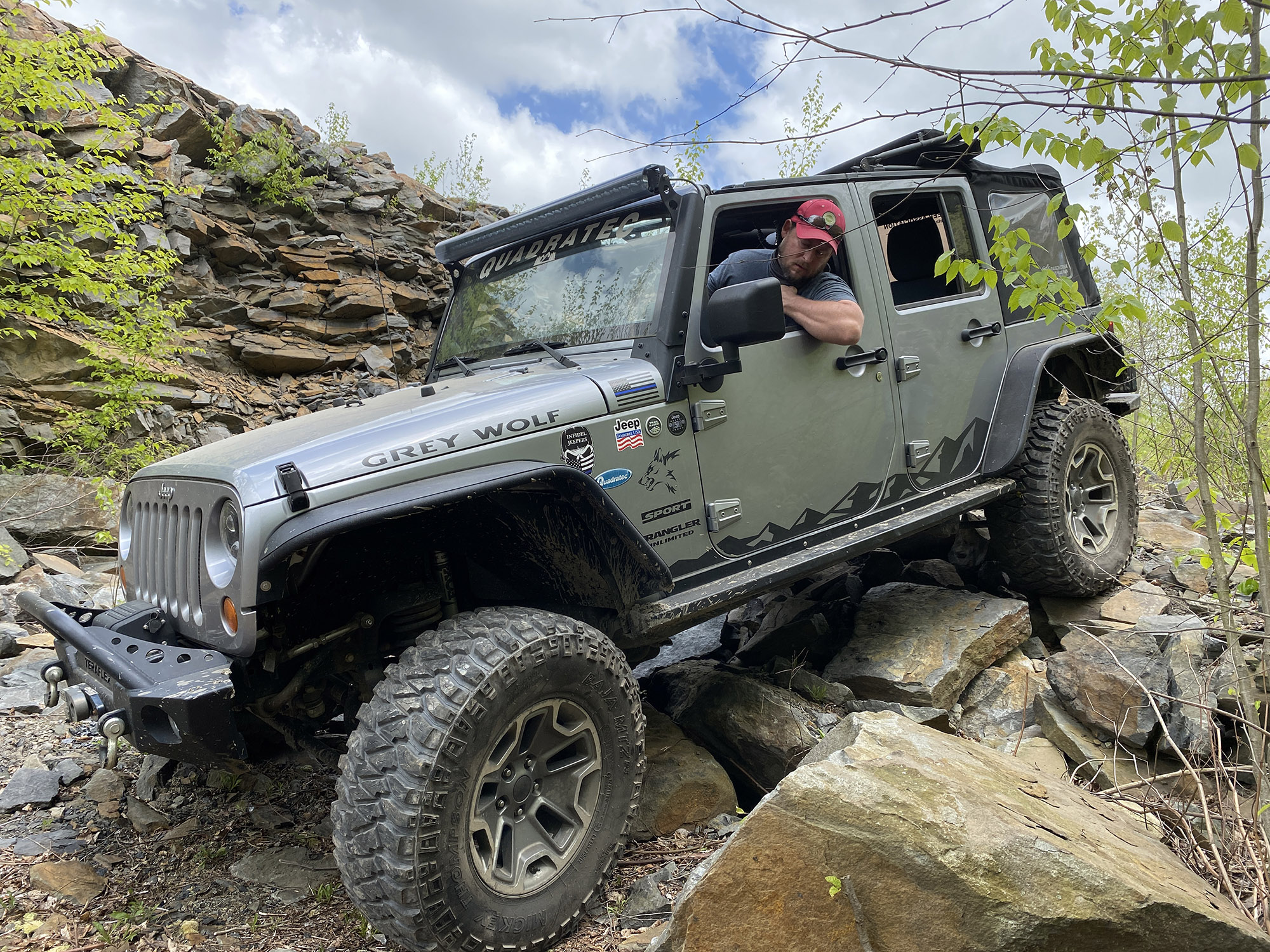by Scott Ammerman
Senior Torque Correspondent
There are an almost infinite amount of tires you can purchase when looking to upgrade your Wrangler, and most have a very specific function inherent to their design. So when you are angling to replace that rubber, you should take a moment and think about what you want to accomplish. For instance, does it make sense to go up a tire size and will it fit on your vehicle? Should you stick to the OEM brand and measurement? Or will a more aggressive style tire suit your needs?
Well, let’s see about getting some answers to those questions and looking a bit deeper into what makes up the Jeep tire aftermarket.
First, though, it is definitely important to take a look at what you currently have and understand how it may fit into your future Jeep plans. Do those tires suit your driving needs? What do you feel can be improved upon if you upgrade? Do you know the options available? Do you know what those sidewall letters and numbers mean, and why they are important?
Let's break this down into two segments — tire size and tire type.
Tire Size
All tires have numbers and letters stamped into their side that tells you a lot about them. Unfortunately, it’s not always apples to apples when comparing one tire to another, because of the way these measurements are recorded.
For example, many JL Wrangler Sport models, with no optional extras, are equipped with a 245/75R17 tire from the factory. Let’s break that number down a bit.
That initial 245 in the first section tells you the tire’s width, in millimeters, of the tread from the edge of the inner sidewall to the edge of the outer sidewall — when mounted on an appropriately sized rim. This means the tire is around 9.65 inches across.
The 75 listed next isn’t the measurement of height in millimeters, as that would be too easy. This is actually the aspect ratio, meaning the percentage of the tread width that the sidewall is in height.
R means “radial” which most tires are these days. Most off-road enthusiasts do not run bias ply tires except in certain circumstances, so that isn’t really important here.
17 — this third number is crucial. This is the height of the wheel these tires have to be mounted on, but measured in inches. Unfortunately, this causes problems for people all the time when ordering tires as it is very easy to get tied up in the first few measurements and order a 17” tire for an 18” wheel. This simply won’t work.
The reason I stress its importance is because without the third number remaining constant, you can’t effectively compare tire sizes.
Often, you hear Jeep people refer to tire sizes in inches — “33s” or “35s” or even “40s”. In this example, how do we know what size tires these are? Well, when you add the converted sidewall height (7.26”) twice to the wheel inch measurement, you end up with 31.46”, or roughly a 31.5” tire.
Now, if you had a 245/75R18 tire then the diameter of that tire would be an additional inch, but is only usable with your setup if you replace your current wheel set with 18 inch versions.
Feel like you have a good handle on this? Great. When you get up to even larger sizes, these rules get thrown out completely.
Lets take the Nitto Trail Grappler tire for example. In 33”, 35”, 37” and 40”, the measurements are expressed differently, and in a much more straightforward method — particularly if you don’t want to do a bunch of math.
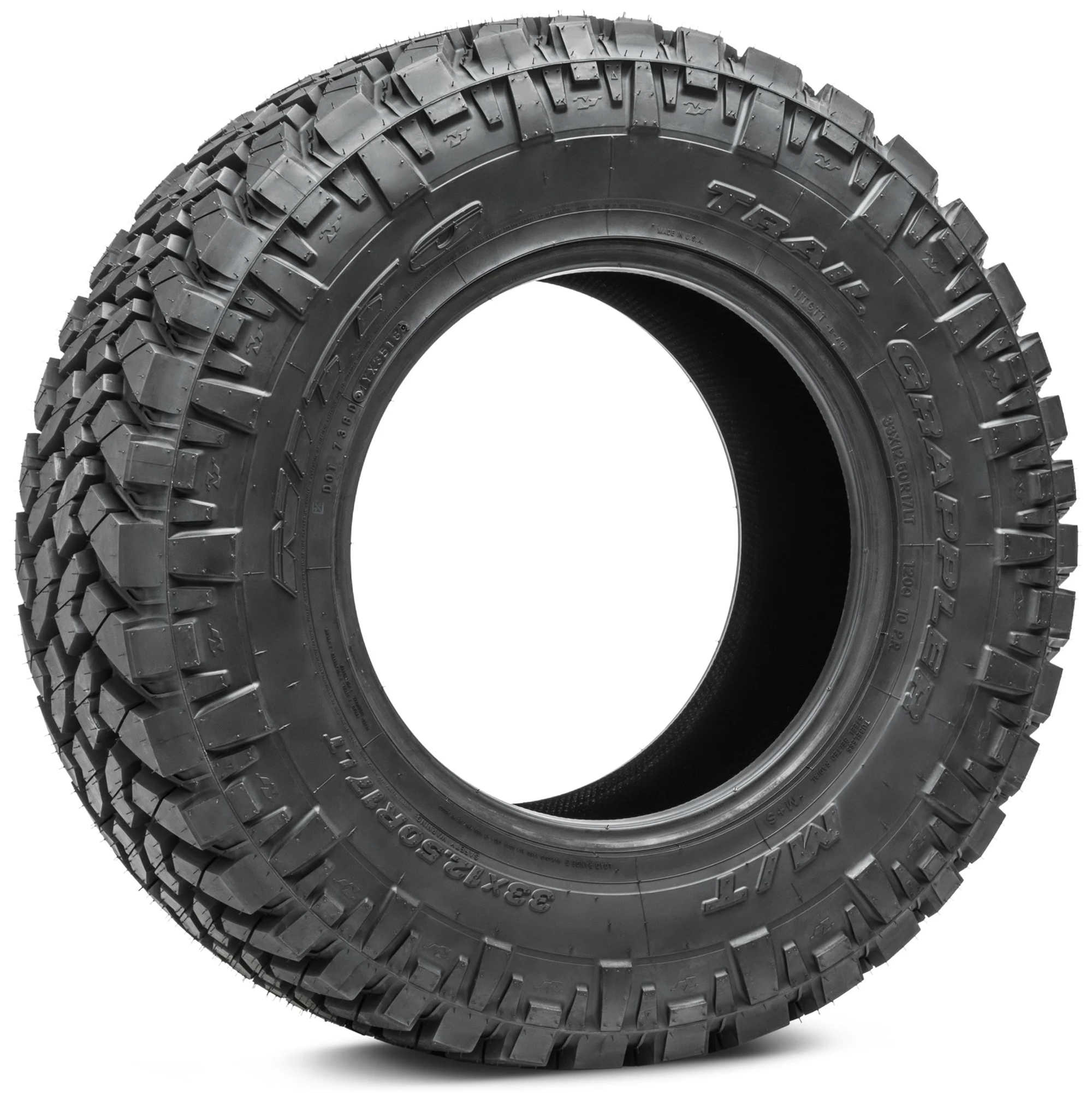
If you look at the tire in this picture, the measurements are listed as 33x12.50R17LT.
For this example, we’re looking at a 33” tall and 12.5” wide tire, to be mounted to a 17” rim for a Light Truck.
On a metric-sized tire, as above, the “LT” designation would usually appear before the measurements. LT tires are used for heavy loads, towing and off-roading.
Here is the important stuff. If you look at the actual dimensions, these inch measurements are not quite as accurate as the metric measurements. On this tire, the actual inflated height is 32.76” and 12.52” wide. This is very close to the advertised specs on this model tire, but many are rounded up or down. So check the exact specs if tire measurements are critical to what you’re trying to accomplish.
As far as changing out your current set up and going up a size (or several), this could create clearance issues with suspension components, fenders or body parts depending on your year model, so keep this in mind.
You should also absolutely look into what other things you might need, including new wheels that have a higher amount of backspacing to work with your vehicle’s current gearing. Keep in mind that changing to larger tires could impact your Jeep’s shift points and acceleration. So you may need to swap to a better gear ratio as well. Or at the very least, purchase a programmer to fix those shift points.
Here is a common question on upgrading tires — can you fit 35” tires on a JK with no lift? And the answer? Maybe.
But how much do you care about being able to do things like go over bumps, steer around tight turns and have the tires actually last? And yes, that was a little sarcastic, so let me put it this way: no, you really can’t effectively put that size tire on a stock suspension.
At minimum, with factory wheels, you’d be rubbing the frame turned one way, and the sway bar the other — and any type of articulation off road would lead to impacts with the fender flares. Not ideal at all.
Tire Type
All Season Tires
If your Jeep pretty much sticks to pavement all year long, and performance in all weather conditions is your ultimate goal, then an All-Season tire might be your best choice.
These tires will have tread and design components geared towards equal performance in many weather conditions. Additionally, braking distance, resistance to hydroplaning and durability are hallmarks of this tire type.
The Falken Wildpeak is a good example, and there are quite a few OEM sizes for easy replacement on your Jeep. With factory suspension components, or even a leveling kit, this type of tire would work well if you stick to hard surfaces with just a dash of dirt or gravel roads.
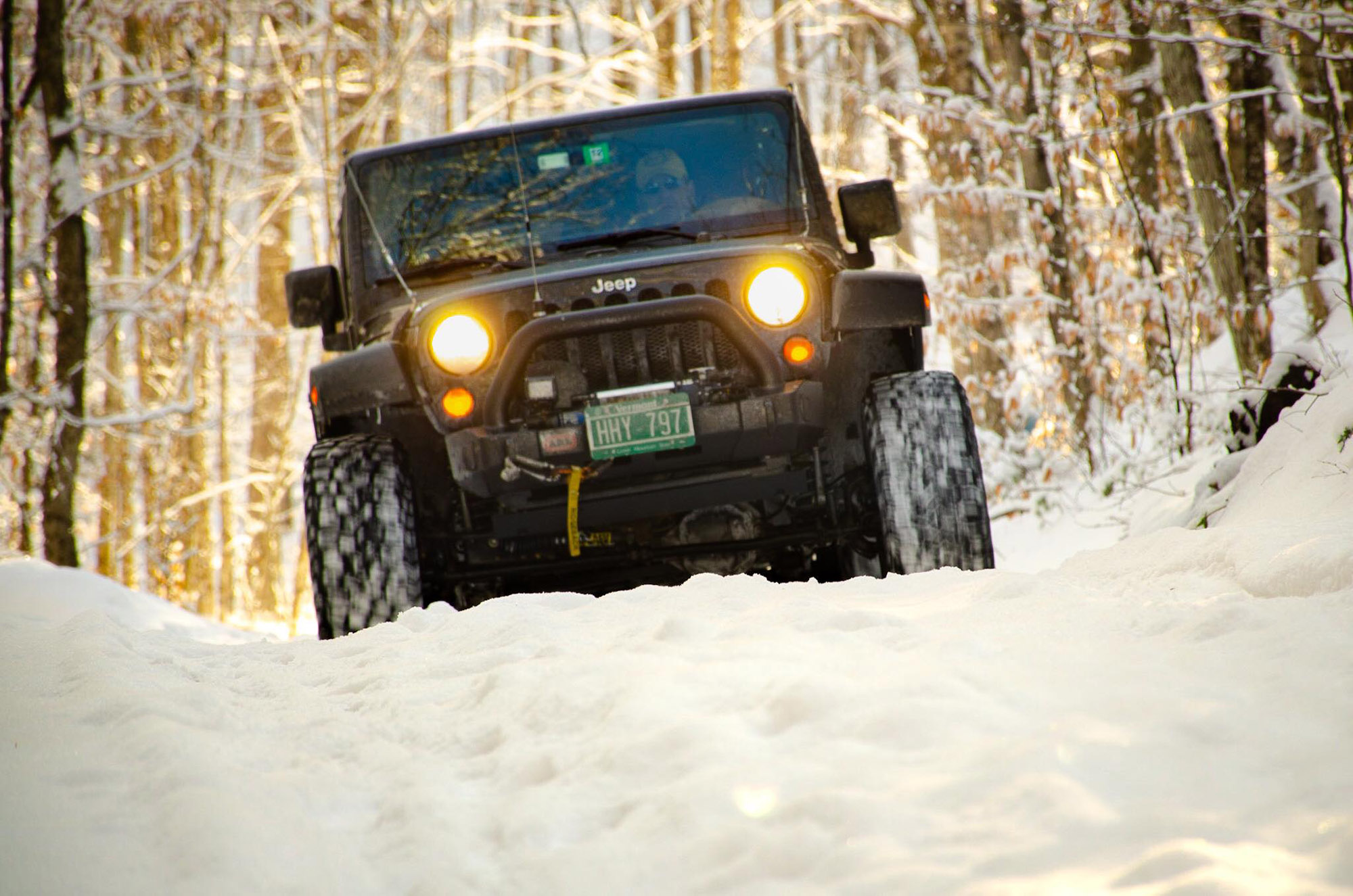
Ron Harrington, veteran trail guide and owner of Ridgeback Guide Service in Pownal, Vermont, says when considering a tire change, make sure to know the different between All-Season and All-Terrain.
“All season tires are for different types of precipitation on-road,” he said. “All terrain tires with the right load range for your vehicle are for all terrain. They are designed to overcome dirt, mud, and rock — not just snow, rain and ice.”
All Terrain Tires
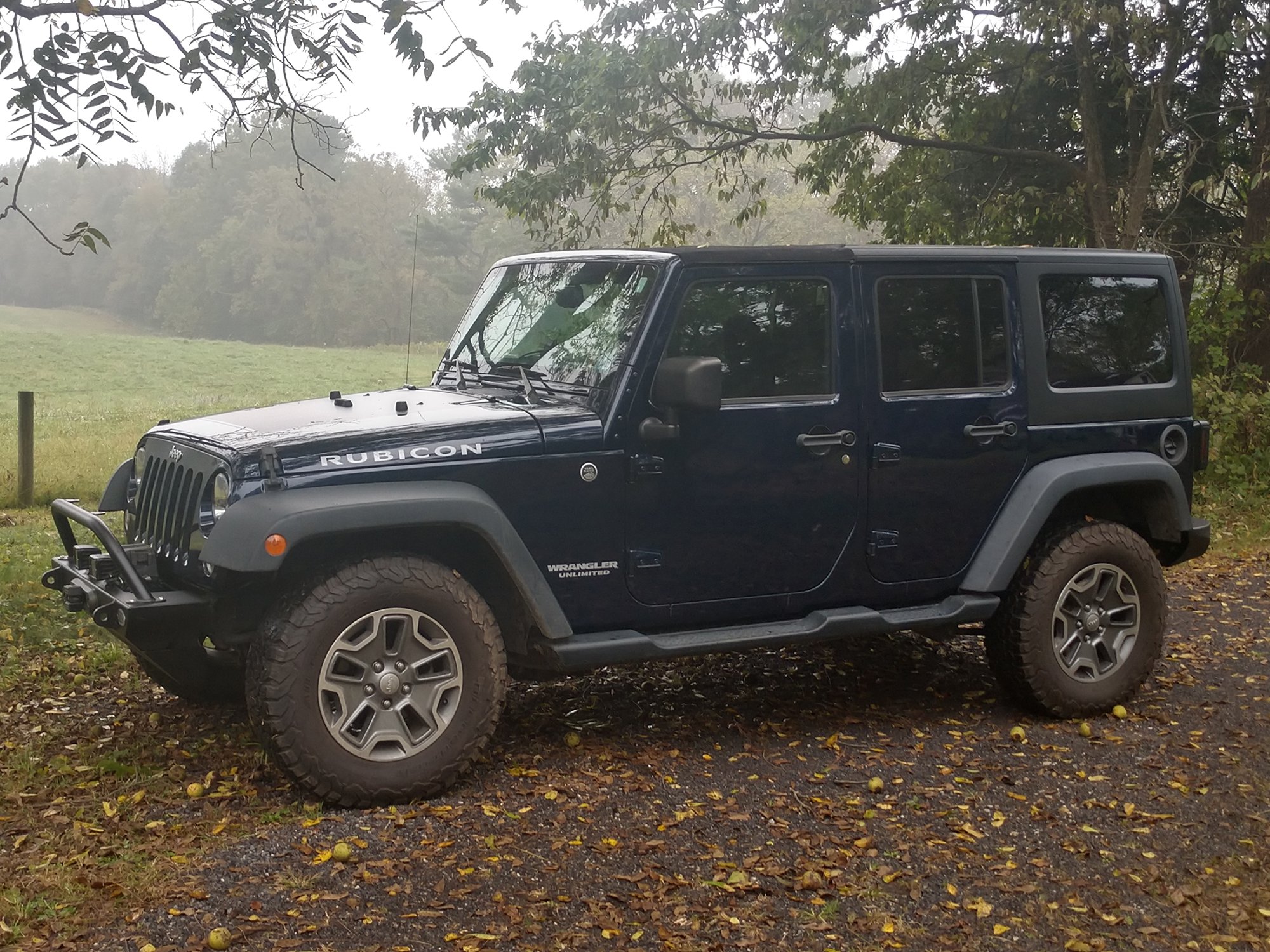
If you do predominantly highway driving and occasionally venture off pavement, then an All Terrain tire might be the best choice for your tire upgrade. These tires have the advantage, by and large, of being quieter at highway speeds, and reducing or even eliminating the droning noise caused by the blockier tread on mud terrain tires.
They may not last quite as long as street tires, but the premium models have more aggressive tread blocks designed to give additional traction in varied terrain, whether mud, sand or dirt. On slick rock, deep mud or jagged stones, these might not be the best choice, but they’ll get you by if you press them into occasional duty and you have a backup recovery kit.
This was Project Rattler on a set of BF Goodrich KO2s before the vehicle got a lift and other modifications. These tires were great in rain and even off road, but also had above average snow traction compared to many all terrain tires.
Mike Hecht, of The 4X4 Center in Burlington VT, is a longtime winter driving instructor. He believes the safest tire is one designed to perform well in you climate's most extreme conditions.
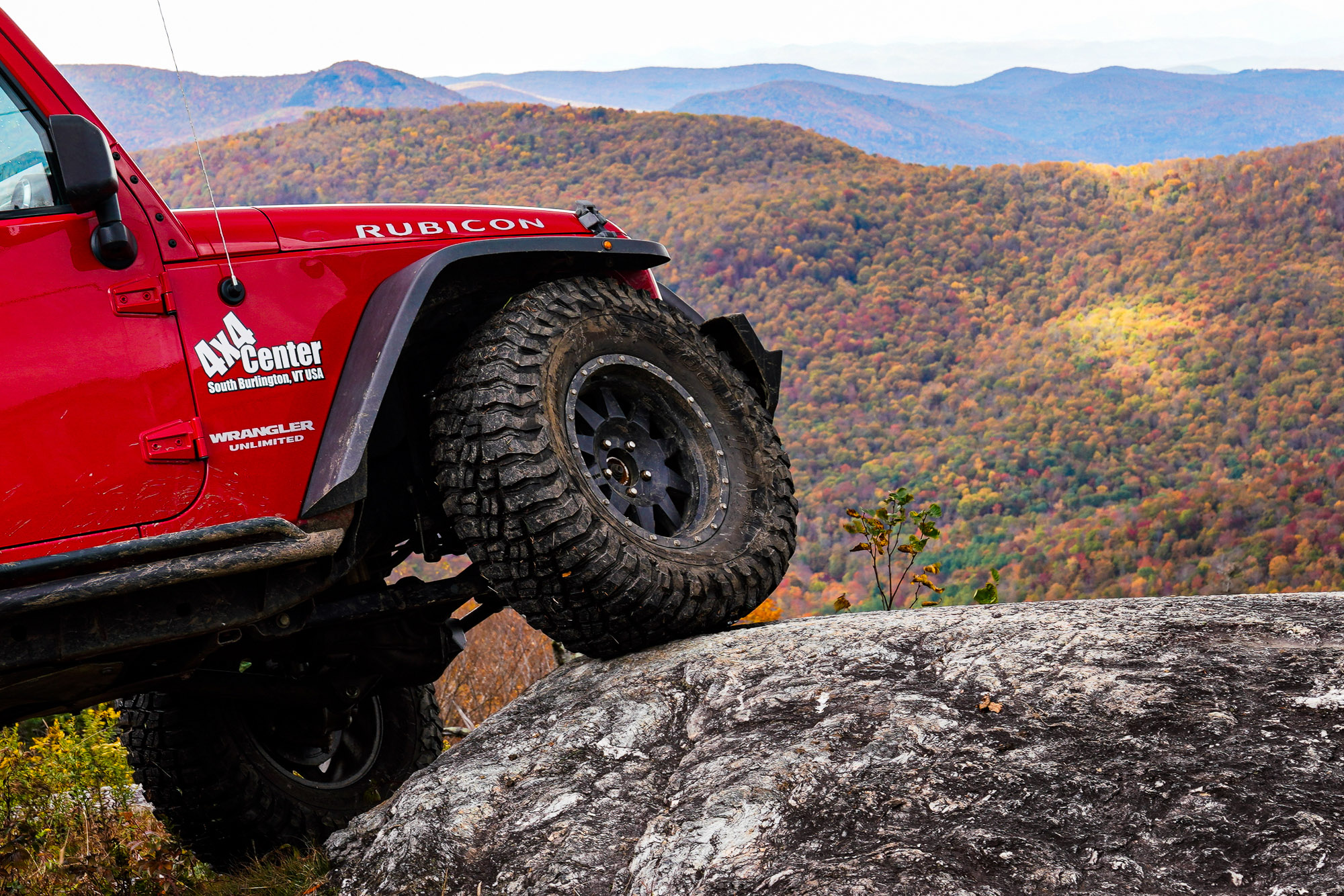
“Don’t overlook the cost of safety in your tire selection," he said. "The cost of your peace of mind, deductible, or risk of injury due to an accident that could have been prevented by a better tire, will always outweigh the extra money it would have cost to put the correct tire on your vehicle this season.”
For me, I had upgrade plans for Project Rattler, so even though the 32” BFG tires were perfect on the stock suspension, my goal was to upgrade into 37” Mud Terrain tires. I did get many months of seat time on these and did appreciate their performance in light snow, where mud terrain tires have less grip.
So, how do you know if you’ve outgrown your All Terrain tires and are ready to move up to the next phase? Just ask Matt Konkle, Torque website editor in chief, about this moment with his project Gray Wolf.
“I really looked for this project to be a daily driver build that would also not disappoint off-road. And the Mickey Thompson ATZP3s are definitely a solid choice to fit that mantra,” he said. “However, when that off-pavement time really ramps up a lot more than you figure, then swapping into mud terrain tires only makes sense. For me, the extra off-road traction Mickey Thompson’s MTZP3 tires provide was ideal — while still giving me solid on road capability.”
Mud Terrain Tires
Here is where things get more aggressive. Now, I will say this — Mud Terrain tires largely get a bad reputation for being excessively loud, and while this can be the case with some models, it isn’t true across the board. Many premium brands are quiet when brand new, and will remain so as long as you properly keep to a consistent tire rotation schedule.
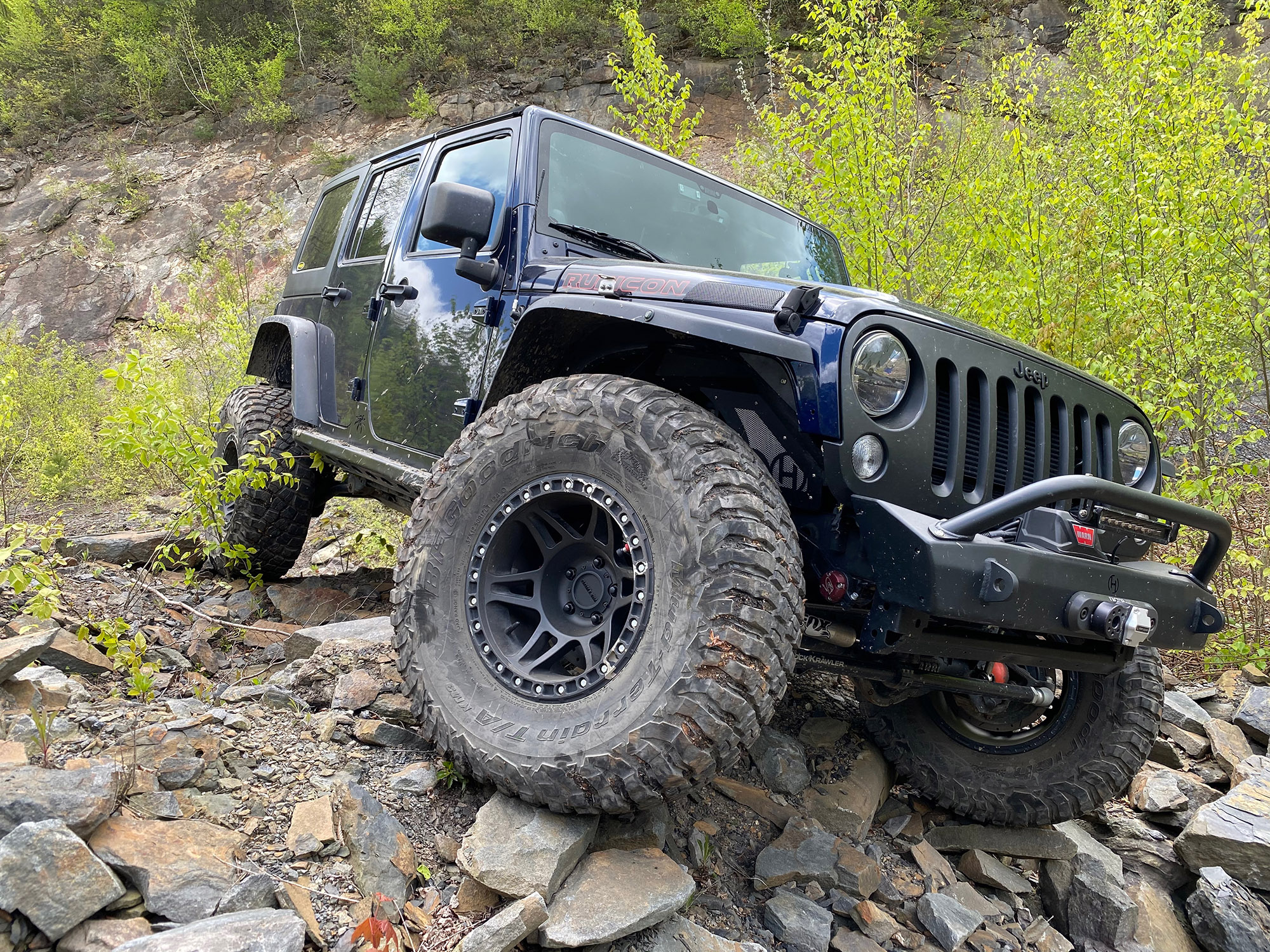
Yes, the tread blocks on mud terrain tires are far more aggressive compared to their all terrain cousins. And when you are deep into the trail, you'll really appreciate that aggressive design's ability to plow through pretty much everything in your way. Above is Project Rattler with BFG KM3s in 37x12.50R17, on Method MR106 wheels with 3.5” backspacing. This was my initial setup goal following a suspension upgrade, and there is even enough clearance to add in 39” tires later if I felt that desire.
In addition to deep mud, these tires grab into ruts, roots, rocks, as well as many other things that don’t start with the letter R.
The deep chunky lugs grab onto almost anything in an attempt to get you through the sloppy stuff during your trail experience, and when the pressure in those tires is reduced, they also do a great job of conforming to uneven terrain to pull you over that next obstacle.
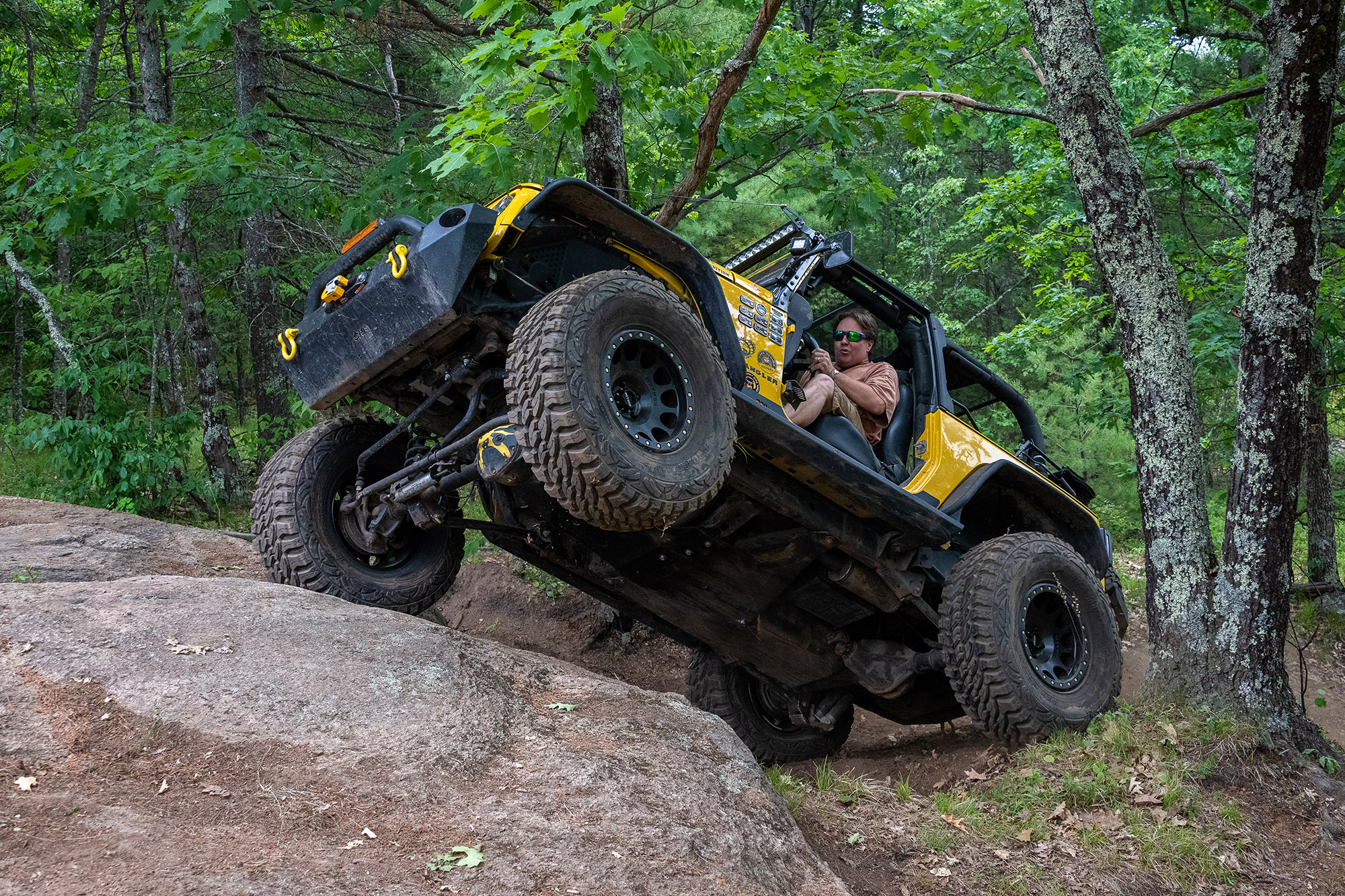
Dan Oster, a member of Lake Region Jeepers, runs Pro Comp MT2 Mud Terrain tires in 37x12.5x17.
“On the wet, slippery surfaces in New England, I never considered an AT tire. The drawback of a little less fuel economy, road noise, and shorter life is a worthwhile trade for all of the extra traction that a true Mud Terrain has to offer in mud, snow, and on slick surfaces from snow, wet granite to leaves.
”The Pro Comp Xtreme MT2 has been an amazing tire — incredible traction, superb handling on all kinds of surfaces and low noise at high speed.”
Recommended Reading:
Top Jeep Articles
- December 18, 2024
- 3 min read
- December 12, 2024
- December 9, 2024
- 5 min read
- December 5, 2024
- 25 min read
- December 4, 2024
- 4 min read
- December 2, 2024
- 8 min read
- November 29, 2024
- 9 min read












